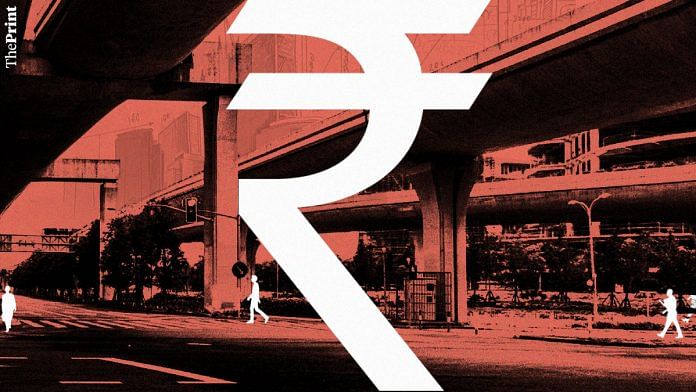
The Narendra Modi government is reported to be planning to set up a Development Finance Institution (DFI) to meet the financing needs of the infrastructure sector.
The lack of a sustainable source of funds, however, can prove to be a serious constraint to the proposed DFIs.
Subsidised credit from the government and the Reserve Bank of India (RBI) has not proved to be a sustainable source in the past. Moreover, the bond market in India is awaiting reforms before it can become deep and liquid, and prove to be such a source.
At the heart of this old idea coming back in a new shape is the banking crisis in India, which emerged as a consequence of banks trying to fulfill the funding requirements of infrastructure projects.
The intent behind setting up a DFI is that infrastructure requires long-term financing and banks are not suited to finance infrastructure projects.
Banks’ liability profile is not suited for financing long-term, high-risk infra financing. The strategy of bank-led financing for infrastructure was tried in the early 2000s. During 2003-2008, the growth in bank credit saw a phenomenal growth of 40 per cent. The bulk of the bank credit went to infrastructure and construction.
But the global financial crisis, and the recession in the economy since 2012 made repayments of loans difficult. The following period saw a spurt in non-performing assets (NPAs). Schemes such as corporate debt restructuring, sustainable structuring of stressed assets, strategic debt restructuring and joint lenders’ forum led to evergreening of loans. Bank loans were stuck resulting in a decline in growth of bank credit.
This, however, is not the first time India is toying with the idea of DFIs. In the past, DFIs have not worked well. It is useful to examine why previous attempts did not work.
Earlier attempts
In the 1950s, a new class of financial institutions termed as the development financial institutions were set up to cater to the long-term finance needs of the industrial sector.
The first DFI was the Industrial Finance Corporation of India established in 1948. This was followed by the setting up of State Finance Corporations (SFCs) at the state level after the passage of the SFCs Act, 1951.
Some other DFIs set up during the early phase of planned economic development were ICICI Ltd in 1955, and UTI and Industrial Development Bank of India Ltd in 1964. A second generation of DFIs were set up as sector-specific financial institutions after 1974.
Some of the institutions set up under this phase were National Bank for Agriculture and Rural Development, Export Import Bank of India, Power Finance Corporation Ltd, Indian Railway Finance Corporation Ltd and National Housing Bank.
DFIs received subsidised credit from the government. They also had access to concessional financing from RBI. In addition, they had access to cheap funds from multilateral and bilateral agencies, guaranteed by the government. The bonds issued by DFIs qualified as SLR (statutory liquidity ratio) investments by banks. As a consequence banks lent to these DFIs.
After the financial sector reforms of the 1990s, the supply of subsidised credit was gradually withdrawn. The DFIs were forced to borrow from the market. While equity markets regulation and infrastructure in India saw reform, the foundation of debt market infrastructure continues to remain weak.
The fund issue
The withdrawal of subsidised credit was not substituted by strong debt markets. This meant that DFIs did not have access to cheap funds though they continued to lend at low interest rates. The DFI model came under duress. Multiple committees of the RBI found structural problems with the model, and recommended converting DFIs into banks — such as IDBI and ICICI — or non-banking financial companies.
India’s bond market is characterised by the absence of a well-developed and liquid government bond market. The corporate bond market, in turn, is characterised by limited liquidity in lower rated bonds. The market is dominated by private placements of bonds, which are then simply held to maturity.
A host of regulatory restrictions on financial institutions such as insurance and pension funds constrain their ability to participate in infra financing. This inhibits a vibrant, liquid and efficient market for bonds.
The surge in NPA in the banking sector, and the need to augment financing of infrastructure for kick starting the growth cycle has led to a renewed policy attention on setting up of DFIs.
While boosting investment in the infrastructure sector is imperative for sustained growth, the need of the hour is to resolve persistent issues in the debt market that impede the flow of long-term financing.
Subscribe to our channels on YouTube & Telegram
Why news media is in crisis & How you can fix it
India needs free, fair, non-hyphenated and questioning journalism even more as it faces multiple crises.
But the news media is in a crisis of its own. There have been brutal layoffs and pay-cuts. The best of journalism is shrinking, yielding to crude prime-time spectacle.
ThePrint has the finest young reporters, columnists and editors working for it. Sustaining journalism of this quality needs smart and thinking people like you to pay for it. Whether you live in India or overseas, you can do it here.